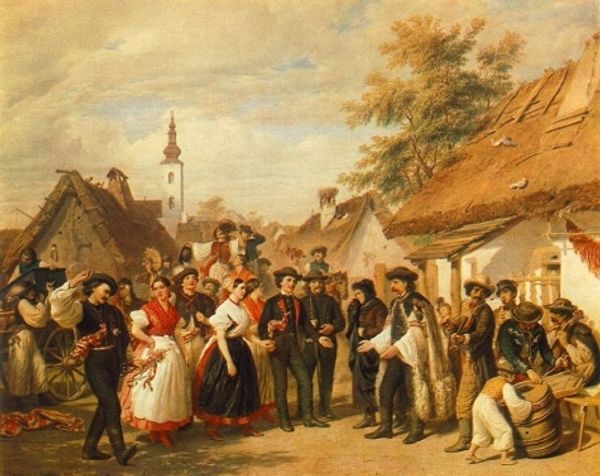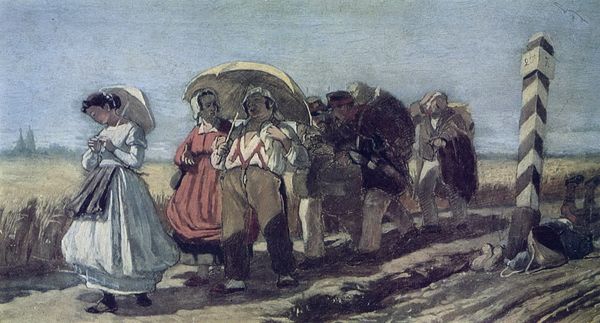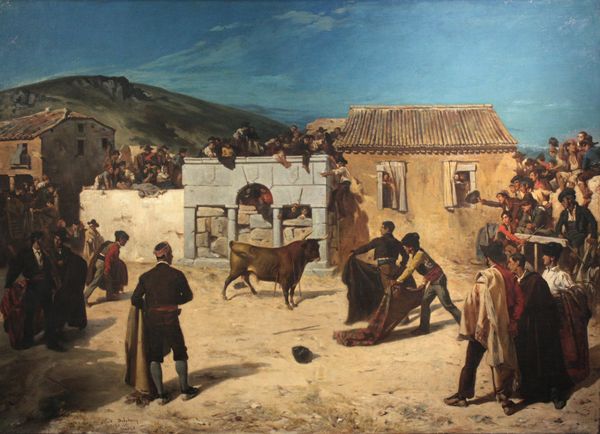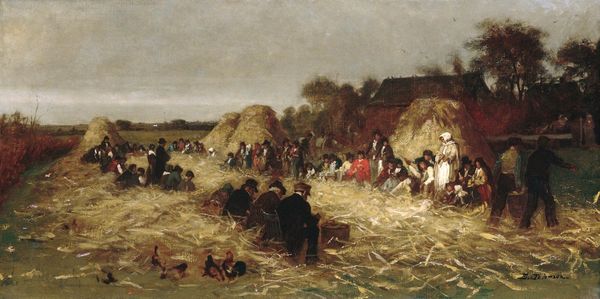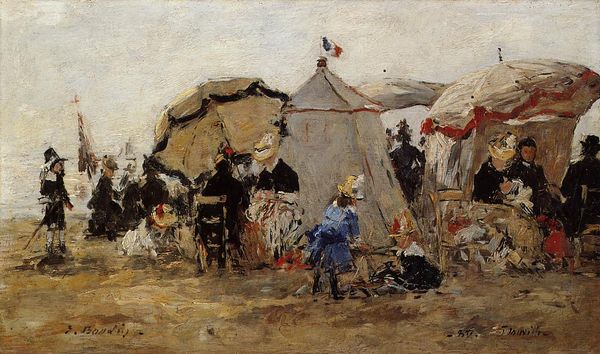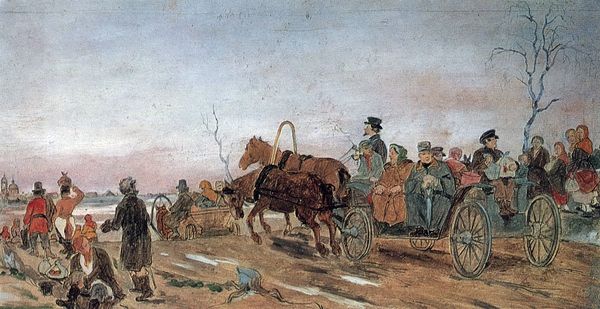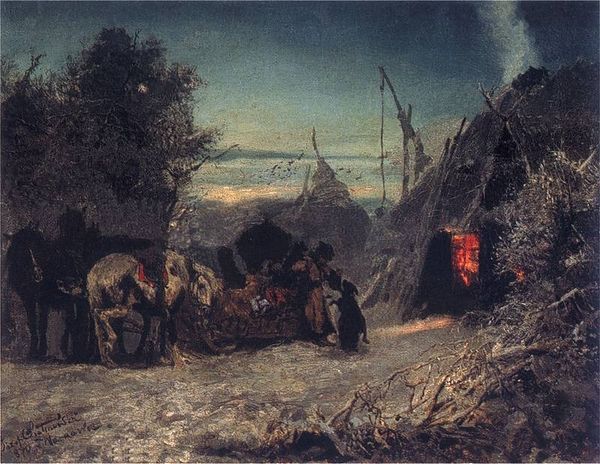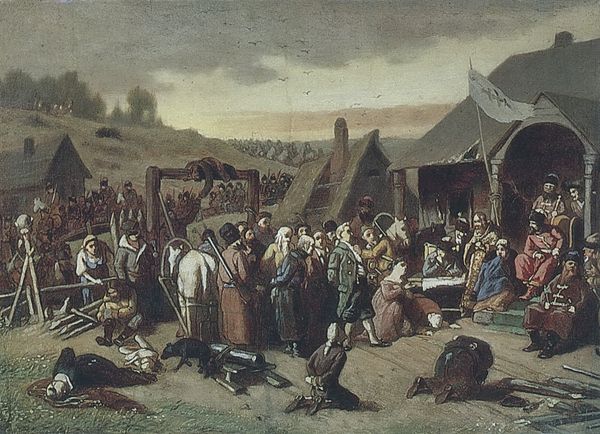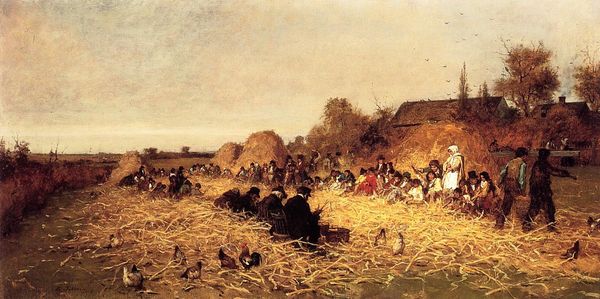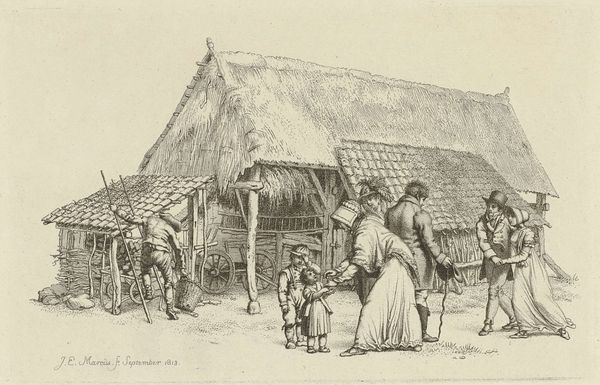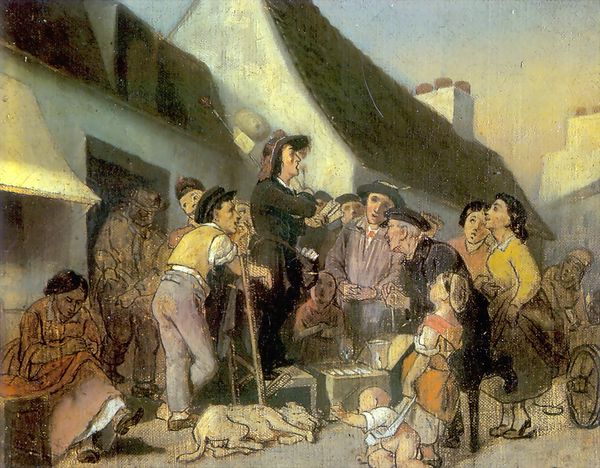
Copyright: Public domain
Editor: Right, next up we have “In the Rain,” painted in 1873 by Józef Chełmoński. It's an oil painting, and I’m struck by the rather somber atmosphere despite the presence of this group of people. What story do you think Chełmoński is trying to tell here? Curator: Well, consider the political landscape of 19th-century Poland. It was a nation partitioned and struggling for independence. Paintings like these, depicting everyday peasant life, served as a powerful symbol of Polish identity and resilience against foreign oppression. Editor: So, the seemingly simple scene is actually loaded with political meaning? Curator: Precisely. Chełmoński, aligning with Realist and Romantic traditions, elevates the common folk to subjects worthy of artistic attention. What seems like a mundane interaction—perhaps a marriage negotiation—becomes a statement of national pride. The rain-soaked setting underscores the harsh realities of rural life, yet also emphasizes the enduring spirit of the community. Do you notice any particular elements in the composition that contribute to this reading? Editor: I see, the close-knit group huddled together, maybe signifying the strength found in unity. And perhaps the dilapidated house serves as a reminder of the prevailing difficult circumstances. Curator: Indeed. Chełmoński wasn’t just painting a pretty picture. He was using his art to comment on the social and political realities of his time, subtly encouraging resistance to cultural erasure through the celebration of Polish heritage. Editor: This really changes how I view the painting. What I perceived as just a rainy-day scene, has emerged as a commentary on Polish society under oppression! Curator: Exactly! It demonstrates how crucial understanding history can be to unravel the meaning and social significance of art.
Comments
No comments
Be the first to comment and join the conversation on the ultimate creative platform.
